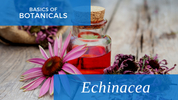CBD vs. THC: What’s the Difference Between These Cannabis Compounds?
CBD, THC, CBN, CBDA — the cannabinoids roll off the tongue a bit like alphabet soup. There are over 400 natural compounds found in cannabis. One hundred plus (100+) of those are specifically cannabinoids, a type of compound that interacts with the body’s endocannabinoid system. The two most studied and most discussed cannabinoids are Cannabidiol (CBD) and Tetrahydrocannabinol (THC).
Both CBD and THC interact with the endocannabinoid system found in vertebrates. This can happen in a few different ways. These plant cannabinoids can affect the levels of naturally occurring cannabinoids in the body (endocannabinoids) by occupying enzymes. They can also bind in some fashion. We say “in some fashion,” because this interaction can happen in different ways. It can function like a “lock and key” situation where the molecule nestles nicely into the receptor. Or it can be a case where the molecule actually acts as something partially wedged in that lock, not fully locking into place but preventing another activator from attaching itself.
Join Bluebird Botanicals as we explore these two compounds in all their cannabis-derived glory — and how their small differentiating features can signal big differences on a chemical, legal, and physical level.
About the cannabinoids: a primer
The endocannabinoid system or endogenous cannabinoid system is part of the body’s neuro-immuno-endocrine network. It’s considered a major regulatory system and includes organs and tissues that work in conjunction to create signals in the human body with chemical messages. Think of it like a self-balancing scale for homeostasis — as environmental influences impact our bodies, the endocannabinoid system responds to restore balance.
The bodies of humans and other mammals produce their own cannabinoids, called endocannabinoids, that interact with this system. CBD and THC, on the other hand, are called “phytocannabinoids,” meaning plant-derived cannabinoids. While cannabinoids are naturally present within quite a few different plants like cacao, black truffles, and black pepper, cannabis is one of the few plants known to contain CBD.
As endocannabinoids and phytocannabinoids are chemically similar, both can activate the same receptors in the body and produce similar effects.
Within the endocannabinoid system, there are two identified receptors with which cannabinoids interact. These are called CB1 and CB2. The different ways that CBD and THC interact specifically with these receptors highlight some of the most important differences between these two compounds.
More on that later!
Fun fact: Because it is estimated that CBD may interact with as many as 65 different receptors and reactors in the brain, some scientists refer to CBD as a “promiscuous” compound.
Chemically speaking
CBD and THC are both present in all types of the Cannabis sativa plant, including both hemp and marijuana. Hemp is primarily used to make hemp oil, fabrics, food, rope and, of course, CBD. This is because hemp generally has low levels of THC - less than 0.3% by dry weight per federal regulations - and higher levels of CBD. Recreational and medical cannabis, by contrast, are used for their high concentration of THC.
Given that both CBD and THC come from the same plant family, it makes sense that these two molecules are related. And they’re closely related, in fact. CBD and THC share a nearly identical molecular mass, weighing in at 314.469 g/mol and 314.464 g/mol, respectively. CBD and THC are also “structural isomers,” which is really just a fancy way of saying they boast the exact same building blocks in their chemical makeup. Both CBD and THC contain 21 carbon atoms, 30 hydrogen atoms, and two oxygen atoms. They’re just laid out in a slightly different arrangement.
These similarities have earned CBD and THC the nickname “sister molecules.” But while CBD and THC are sisters, they’re not identical twins. While the two compounds contain the same atomic content, THC’s molecule contains a closed cyclic ring while CBD has an open Hydroxl grouping. Think of it like a fenced in yard: THC’s gate is kept closed while CBD’s is left ajar.
And the slight variation in chemical arrangement makes a world of difference in how these molecules act and interact with the body.
The brain-body connection
We mentioned receptors CB1 and CB2. Both of these are part of the human nervous system, the network of nerve cells and fibers that lets your brain know how to respond to feelings of pleasure, pain, and any other sensory information we receive. This network essentially acts as the brain-body connection: the nervous system takes the information the body experiences and sends the brain a message indicating how to respond.
The nervous system is broken into two components: the central nervous system, which includes the nerves and fibers within the brain and spinal cord, and the peripheral nervous system, which covers everything else. CB1 receptors are most prominent in the central nervous system and other tissues like the kidneys, liver, digestive tract, lungs, and eyes, while CB2 receptors are found more in the peripheral nervous system and in tissues associated with the immune system.
CB1 receptors are far more likely to produce cognitive effects when receiving the correct molecule because of their presence in the brain and spinal cord. CB2 receptors, in contrast, impact many of the processes regulated by the endocannabinoid system without psychoactive effects because of their presence in the peripheral nervous system.
It's possible for most cannabinoids, including both endocannabinoids and phytocannabinoids, to bind with CB1 and CB2 receptors in the human body.
THC gets you high because it likes CB1 receptors and will readily bind with them. It doesn’t interact with the brain stem itself, so it won’t trigger a shutdown of autonomic processes like breathing or heartbeat. But it will tell the brain, “this feels really good.”
CBD, on the other hand, has the potential to positively impact homeostasis in the body without any impact on mental processes or clarity.
This is because CBD doesn't directly set off either CB1 or CB2; rather, it steps in and alters these receptors' ability to bind with cannabinoids. It essentially changes how other cannabinoids can "fit" into these receptors, preventing other cannabinoids from fully locking in as they might otherwise do in the absence of CBD.
Essentially, how it binds affects the mind: Because CBD does not interact with the portion of the nervous system found in the brain and spinal cord, it will not get you high.
Agonists and antagonists
Despite sharing almost identical molecular structure, CBD and THC actually produce nearly opposite effects on the human body as they interact very differently with the CB1 receptors in the brain.
THC is an agonist, or activator, of the CB1 receptor. When this receptor is blocked (by another type of drug, for instance), cannabis will not actually be able to get a person high. This makes it apparent that CB1 receptor is the site in the brain that produces intoxication.
When THC interacts with the CB1 receptor, it can result in increased blood flow to the prefrontal cortex region of the brain. The prefrontal cortex is responsible for decision-making, personality expression, and other high-level executive functions, like motor skills, so these are the sorts of functions that are impacted when THC is present. THC intoxication can affect any of these cognitive processes to varying degrees depending on the person.
CBD, on the other hand, is actually considered an antagonist, or exactly the type of compound that could potentially block the CB1 receptor site from receiving and interacting with the THC molecule. CBD doesn’t bind with CB1 receptors. So, not only will CBD not get you high — no matter how much you consume — but it also can also balance out the impacts of THC when present.
Mixing signals — when CBD and THC combine
So what exactly happens when CBD and THC are both present? Do they cancel each other out?
The answer is: not exactly.
Despite the noted differences between CBD and THC, the presence of both cannabinoids appear to balance rather than counteract the effects.
Some studies have even shown that it’s possible that CBD can act as a protective element with regards to some of the negative side effects of THC. One study showed that participants who had ingested CBD alongside THC exhibited better memory recall than those without.
There still remains much to be discovered about how THC and CBD interact when alongside other cannabinoids, such as CBN, CBC, and CBG, and alongside other compounds of cannabis like terpenes. It is theorized that the interaction between these compounds can actually enhance their separate effects. This is known as the “entourage effect.”
While FDA regulations don’t permit Bluebird to directly discuss the medical impact of CBD, we can let you know CBD has been the focus of more than 23,000 published studies about cannabinoids’ beneficial impact on the body.
Much remains to be seen as restrictions around cannabis shift and additional research is allowed to move forward.
Risk and side effects
Research indicates even large doses of CBD are well tolerated and safe. There have been some reports of dry mouth, light-headedness, and drowsiness. A recent research review examining the safety and side effects of CBD concluded that CBD appeared to be safe in humans and animals. Even chronic use of CBD by humans showed to cause no adverse neurological, psychiatric, or clinical effects.
Legally speaking
Thanks to the 2018 Farm Bill, CBD is now federally legal across the United States. Recreational and medical cannabis are still slowly becoming legalized state-by-state.
Related Article: Progress to Legal Cannabis in All 50 States
CBD's health benefits are still largely untapped due to FDA regulations. In fact, the Drug Enforcement Administration (DEA) has attempted several times, more recently in 2016, to classify both THC and CBD as Schedule I drugs under the U.S. Controlled Substances Act. This classification would indicate they have "no currently accepted medical use and a high potential for abuse."
Despite such resistance, medical data and research continues to arise in favor of legalizing all components from cannabis for widespread use.
What about drug tests?
Cannabinoids like THC and CBD are stored in the body’s fat. They can show up on drug tests for several days or weeks after you use them.
Related Article: Does CBD Show Up on Drug Trusts?
Not every drug test will be able to detect CBD, but CBD-sensitive tests are available. Most standard drug tests will look for chemicals related to THC, so THC or medical/recreational cannabis use might show up on a screening.
Likewise, hemp can produce some THC in addition to CBD, so a test could be positive for THC even if you’ve only used hemp products. Bluebird Botanicals offers a THC-Free* option available for civil servants and athletes who undergo rigorous drug-testing, as well as anyone who may have sensitivities to THC.
Changing the cannabis conversation
Cannabis is a complex plant, and we’re just beginning to learn the many ways its compounds work together and interact with our cannabinoid receptors to change our bodies and minds. As legal policies change and research continues, we anticipate we’ll continue to learn more.
Bluebird Botanicals is incredibly grateful to our every member of our flock changing the conversation about cannabis. You're shifting the needle through your activism and compassionate education. That's radically good. Keep it up - the world could use more radical goodness.









